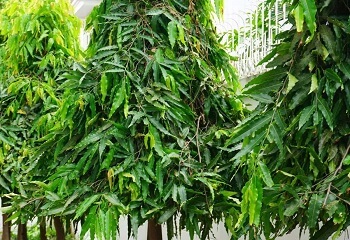Ashoka
Habit: A tree 6-9 meters high; branches glabrous.
Stems are erect or ascending, more than 2 meters tall, solid, glabrous or sparingly
glabrate.
The bark is brown or grey or almost black with a warty surface. Stem bark are rough and
uneven due to the presence of rounded or projecting lenticles. Bark channeled, smooth
with circular lenticles and transversely ridged, sometimes cracked. Fracture splitting
exposing striated surface, a thin whitish and continuous layer is seen beneath the cork
leaver.
Leaves 15-25 cm long; rhachis glabrous, corky at the base; petioles very short; stipules
intrapetiolar, completely united, 10- 13 by 6mm. scarious, ovate, oblong, obtuse,
parallelnerved. Leaflets 4-6 pairs, 10-20 by 3-5.7 cm., oblong-lanceolate, obtuse or
acute, quite glabrous, base rounded or cuneate, slightly oblique; petiolules 4.5- 6.5 mm.
long, stout, wrinkled; stipels deciduous.
External morpholog
Ashoka is one of the sacred trees of Hindus and is found
plentifully along the road side in Eastern Bengal, South India,
Aracan and Tenasserium, U.P. near Kumaon, It is also
cultivated in gardens throughout India for its Handsome
flowers.
It occurs almost throughout India upto an altitude of 750
meters, in the Central and Eastern Himalayas and the Khasi,
Garo and Lushai hills; it is also found in the Andaman Islands.
In Kerala region it is found in Patagiri, Kaikatty and Pothundi
of Palakkad district, Thrisur, Kollam and Kannur districts

